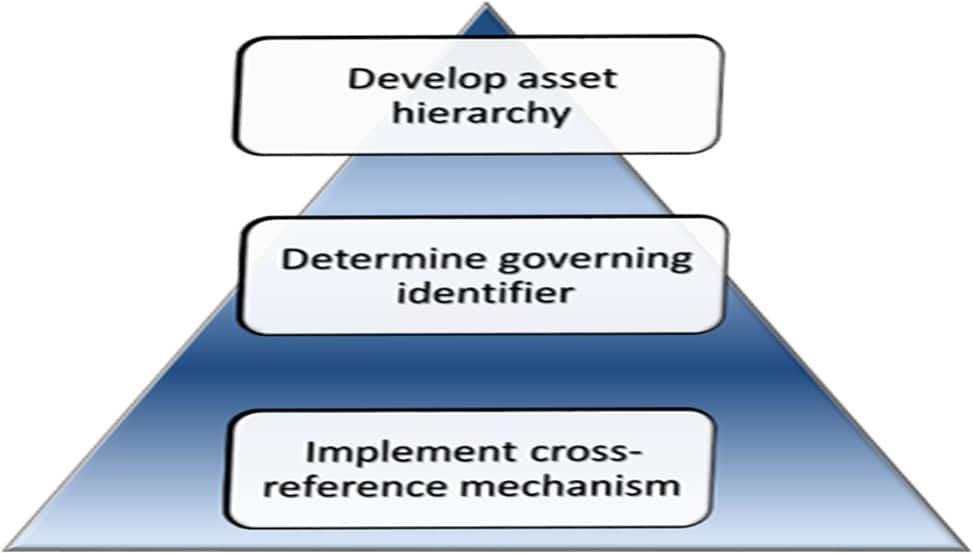The key to solving asset identification is to group all the departmental or functional asset labels into a shared asset hierarchy which is a single source of approved asset identifiers. In developing the hierarchy, you may discover that departments and functions identify assets in different ways at each stage of the asset life-cycle, using various labels. By documenting unique and persistent identifiers from existing department/function labels, you create the foundation on which to build a unique, governing identifier (one per asset type). This creates a consistent way for an organization to describe and identify critical resources throughout their life-cycle, correlate information, and apply that information to the myriad of business processes that support your organization’s entire business mission.
The shared asset hierarchy contains the set of governing identifiers available and used by each department to meet their business needs. Ownership and maintenance of the shared asset hierarchy, and generation of the unique identifiers at each level, should be assigned to specific business units. A single business unit should manage requests for changes and maintain the relationship among the identifiers: the crosswalk or translation that links a single capital project number to the set of lower level assets resulting from it that require maintenance or inspection. Other business units request unique identifiers, as needed. The owner business unit is also responsible for maintaining a current list of unique identifiers and making the list available for cross-reference purposes, if needed.
TrailBlazer recommends a modular asset hierarchy that incorporates Asset Location, Asset Classification, and Asset Collections. Each module is a logical grouping of asset data. While the modules relate to each other in multiple ways, we find that a linear description of ‘tiers’ supports understanding among end users, especially Engineers and Facility Managers. In database or system terms, the modules may reflect separate (one or more) tables containing asset metadata. In other words, the modules, tiers, collections, and other groupings are virtual and can be organized however best supports an organization’s business needs.
What is a Shared Asset Hierarchy?
The shared asset hierarchy defines the relationships between and among specific data elements in each data set enabling cross-functional reporting and data sharing
